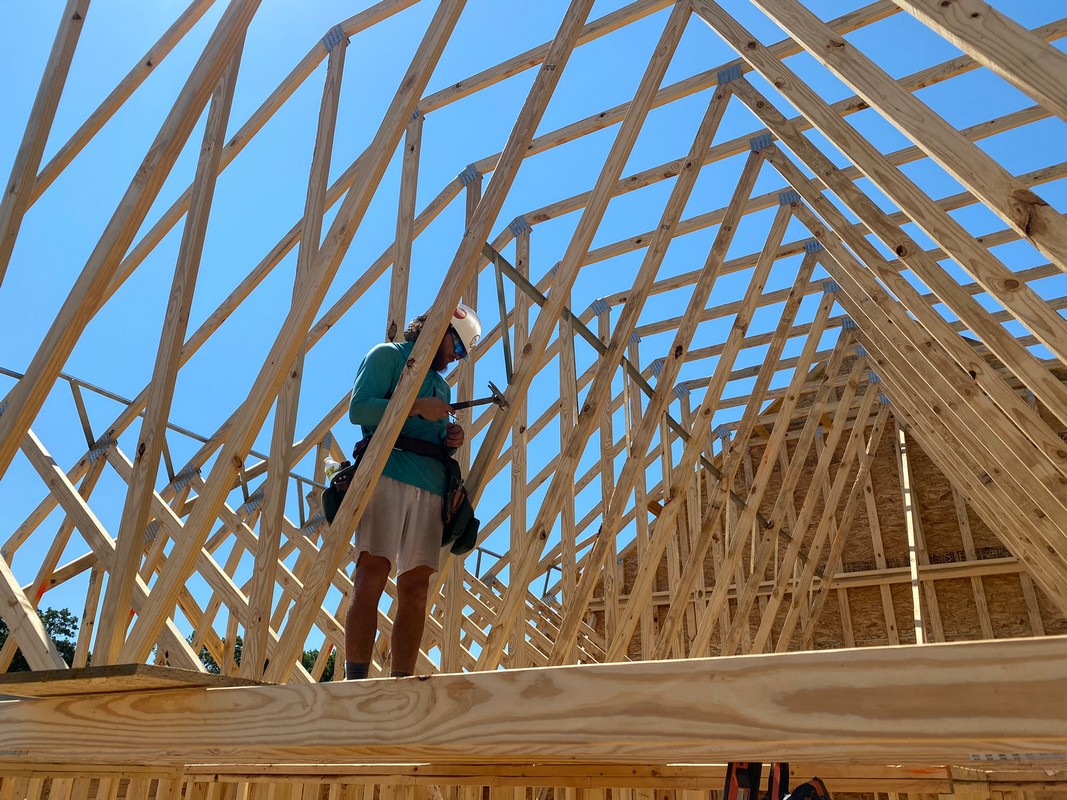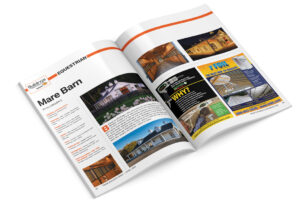To get a better understanding of regional wood species and their characteristics, Alex Anderson, Forest Products Specialist with the Wisconsin Department of Natural Resources, explained the different wood types prevalent in each region of the United States. He also made clear the effect that growing conditions have on wood strength.
What Grows Where
“In the Midwest,” Anderson explained, “we have mixed resources of hardwoods and softwoods. In Wisconsin, we’re predominately hardwood — more hardwood than softwood. It’s the same situation in the Northeast, where it’s also a mix of hardwood and softwood.”
The two regions growing the largest amount of softwood, which is used for dimensional lumber, are the Northwest and the Southeast. “The entire Northwest is almost entirely a softwood resource. The species common in that region are Douglas fir, several pine species, and white fir. The Coastal region has a pretty significant hardwood resource, as well as a few other softwood species that are prevalent in the American Northwest, such as western red cedar and hemlock,” said Anderson.
The Southeast is rich in southern yellow pine (SYP), a group of pine species commonly used to produce dimension lumber. “Southern yellow pine has made huge advances in plantation-grown lumber,” Anderson continued. “There have been huge advances genetically so they have really short rotation; it can be 20-30 years from planting to harvest. Most softwoods grown in the Midwest and West would have much longer rotation times compared to the South. The short rotation doesn’t help the wood’s strength properties, but it helps economics.”
Strength Properties
Southern yellow pine is frequently cut into dimensional lumber. “Generally speaking,” said Anderson, “slower-growing softwoods within same species are stronger than faster growing. (The opposite is true for hardwood species.) Southern yellow pine has really good strength properties so faster-growing SYP has better bending strength properties than a lot of other softwood species.”
One of the key factors contributing to lumber strength is the grain. A growth ring is comprised of earlywood and latewood. Early in the tree’s annual growth season, when the weather and climate are most favorable for growth, the xylum cells have thinner walls, producing the lighter-colored section of the ring called earlywood. By the end of the growing season, when growing conditions are less favorable, the cell walls become thicker and denser, resulting in a darker stripe (the latewood) that separates one tree ring from the next. The latewood is harder and less porous.
The tighter the matrix of rings, the more structural integrity the lumber has, which is why old-growth pine is much stronger than the southern yellow pine grown on plantations today. “In southern yellow pine, one of the major things to consider about strength is that the late wood is the really dense material and earlywood makes up the majority of the material because of the fast growth,” explained Anderson. “That’s how that loss in strength values came about when compared to old growth. The rings are further apart in contemporary wood. If you look at a weathered piece of wood, it looks wavy because the earlywood fibers deteriorate more easily than latewood does. It becomes more pronounced between parts of each growth ring. In a comparison of old growth southern yellow pine to a new one, there is far more earlywood than late wood in the faster-growing trees,” Anderson explained.
Note on Lumber Production
Anderson estimates Wisconsin’s biggest softwood lumber mill cuts about 100 million board feet of boards, dimension, and timbers. As a comparison, some Southern mills, which have considerably more softwood resources, produce three to four times that much. He’s also confident it’s not the loggers and landowners who are reaping the benefits of today’s high lumber prices.























